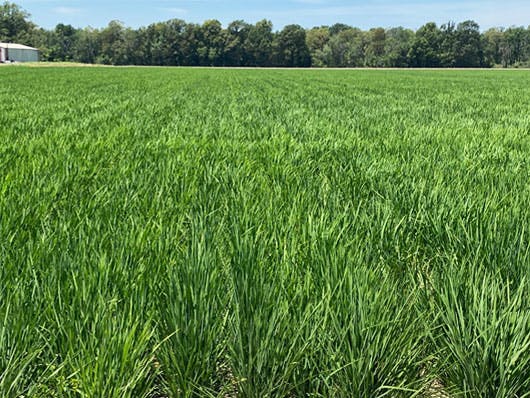Considerations for Row Rice in 2021
03/12/2021
As interest in furrow-irrigated or row rice continues to grow in areas of the South, it is important to balance the advantages and disadvantages of the system and consider best management practices like optimal variety selection to maximize profitability.
Driving this interest is the fact that some consider furrow-irrigated rice generally easier to manage because of the elimination of levees. Seedling rice, when managed under flood irrigation, can suffer from drought stress or too much moisture. Farmers are more hesitant to flush, and residual herbicide activation suffers during periods where no precipitation is received. When the field is in row rice, it is easier to decide to flush because labor and setup time may be less cumbersome.

Reduced land preparation following soybeans is another benefit, as well as managing water on and off the field. By not having a flooded situation, it can be easier to flush a field to activate herbicides and dry it up in a timely manner to apply preflood herbicides by ground application.
For row rice production on fields with less than 0.2% slope, yields are typically only negatively impacted in the top 1/3 of the field and sometimes in the bottom 10–20% of the field. The yield loss in the top portion of the field is likely due to inefficient nutrient uptake and possibly drought stress. Yield loss on the bottom portion of the field can be attributed to deep water. The middle portion of the field can actually yield 5–10% higher than conventionally flooded fields due to the benefits of alternate wetting and drying.
On the other hand, nutrient uptake is not as efficient in furrow-irrigated rice as in a drill-seeded, delayed-flood rice culture, which has proven to give farmers the opportunity to reach more than 70% nitrogen uptake efficiency. Phosphorus also becomes more available in the soil once a flood is established. Phosphorus is critical for rice to make reproductive tillers and reach its optimum yield potential.
Pest management is another consideration. For years, flooded soil was the weed control of choice, and flood depth has been shown to be a management tool for blast-susceptible varieties to protect yield potential from significant losses from rotten neck blast. The uncontrolled rice water weevil thrives in flooded soil conditions, but other pests like chinch bugs and the cattail billbug are issues only when fields are dry.
We have a lot of customers asking us if Horizon Ag has Clearfield® varieties that will perform well in a furrow-irrigated rice system. A great choice for 2021 is our new CLL16, a long grain rice variety developed by the University of Arkansas System Division of Agriculture. It has shown excellent yield potential in both flooded rice and row rice situations. In fact, its performance consistency, high milling quality and industry-leading blast resistance make CLL16 the complete package for many rice farmers.
Although hybrid rice cultivars typically get more publicity when it comes to furrow-irrigated rice, the lower seed cost for CLL16 compared to hybrids, combined with its outstanding yield potential, can be important when it comes to maximizing your return on investment and profitability.
Other Horizon Ag Clearfield varieties that are solid choices for furrow-irrigated rice situations are CLL17, a Louisiana-bred Clearfield® variety also being released for the 2021 season, and CLL15, an Arkansas-bred variety that was released commercially last year. Both have proven to be high yielders while also offering best-in-class blast resistance, which is critical for row rice.

The Clearfield herbicide system is an excellent weed control choice in furrow-irrigated rice and the residual actives in Newpath®, Clearpath® and Beyond® herbicides are outstanding tools. Because fields do not have levees, ground rig applications can be made for both herbicides and fertilizer. With these residual herbicides and the ability to flush the field in a timely manner, one can expect excellent weed control.
We look forward to working with you this season and are happy to answer any questions regarding best management for high-performing Clearfield varieties, regardless of your production system.
